This article was medically reviewed by Julia Bowlin, MD. Dr. Bowlin is a practicing Family Practitioner in Greenville, Ohio specializing in Allergy and Immunology. She received her MD from the Wright State University Boonshoft School of Medicine and completed her residency at the Franciscan Medical Center in Dayton, Ohio. She has over 25 years of practicing experience.
There are 9 references cited in this article, which can be found at the bottom of the page.
wikiHow marks an article as reader-approved once it receives enough positive feedback. This article received 19 testimonials and 100% of readers who voted found it helpful, earning it our reader-approved status.
This article has been viewed 5,508,600 times.
If you're experiencing inflammation near your lower abdomen, you may have appendicitis. This condition is most common in people between the ages of 10 and 30, while kids under 10 and women over 50 may have a harder time identifying traditional symptoms. If you are diagnosed with appendicitis, you'll probably need surgery to remove your appendix, a small pouch extending off of your small intestine. This is considered a medical emergency, so it's important to know how to recognize the signs and get help as soon as you can.
Emergency Symptoms
Contact your doctor or go to the emergency room immediately if you experience several of the following symptoms:
- Fever over 102°F (38°C)
- Back pain
- Decreased appetite
- Nausea and vomiting
- Diarrhea or constipation
- Painful urination
- Pain in rectum, back, or abdomen
Steps
Checking Yourself for Symptoms
-
1Look for common symptoms of appendicitis. The most common symptom is a dull abdominal pain near the belly button that radiates or changes near the right lower belly. There are other symptoms that aren't so common. If you find yourself checking off several of them, it might be time to contact your doctor or go to the hospital. You should contact your doctor or go to the hospital as soon as you've identified these symptoms in yourself. Delaying the process will only make your appendix more likely to rupture and will endanger your life. You'll usually notice symptoms within 12 to 18 hours, but they may last up to a week, becoming more severe as time goes on.[1] Symptoms include:
- decreased appetite
- stomach problems - like nausea, diarrhea, and constipation, especially if paired with frequent vomiting[2]
- fever - If your temperature is at or over 103°F (40°C), go to a hospital immediately. If it's at 102°F (38°C) but you're experiencing several other symptoms, go to the hospital as soon as possible. A low grade fever of around 99°F is another symptom.
- chills and shaking
- back pain
- inability to pass gas
- tenesmus - the feeling that a bowel movement will relieve discomfort
- Many of these symptoms are similar to viral gastroenteritis. The difference is that the pain is general and not specific in gastroenteritis.
-
2Be on the lookout for less common symptoms of appendicitis. In addition to the symptoms above, you may also experience symptoms that are less commonly associated with appendicitis. Here are some less common symptoms you can look out for:[3]
- Painful urination
- Vomiting before abdominal pain begins
- Sharp or dull pain in the rectum, back, or upper or lower abdomen
Advertisement -
3Pay attention to abdominal pain. In most adults, your appendix can be located on the lower right side of your abdomen usually one third of the way between your belly button and hip bone. Note that this location may be different for pregnant woman. Watch for a "path" of pain. The sharp pain might move from your navel (belly button) to the area directly over your appendix 12 to 24 hours after you start experiencing symptoms. If you've noticed a distinct progression like this, go straight to the emergency room.
- In adults, symptoms of appendicitis may get worse within 4-48 hours. If you're diagnosed with appendicitis, it is considered a medical emergency.[4]
-
4Press on your abdomen. If it's too painful for you to even touch, especially in the lower right portion, consider going to the emergency room. You may also feel a tenderness in your lower abdomen when you press on it.[5]
- Look for rebound tenderness. If you press on your lower right abdomen and feel a sharp pain when you quickly release it, then you may have appendicitis and need medical attention.
-
5Note any firmness in your abdomen. When you press on your abdomen, is your finger able to sink in a bit? Or does your abdomen feel unusually firm and hard? If you notice the latter, you might be bloated, which is another symptom of appendicitis.
- If you have abdominal pain, but don't have nausea or decreased appetite, it may not be appendicitis. There are many reasons for abdominal pain that don't need a visit to the emergency room. When in doubt, call or see your regular doctor for any abdominal pain that lasts more than 3 days.
-
6Try to stand up straight and walk. If you can't do this without severe pain, you might have appendicitis. While you should seek emergency care immediately, you might be able to ease the pain by lying on your side and curling into the fetal position.
- See if your pain gets worse if you make jarring movements or cough.
-
7Be aware of symptom differences in pregnant women and children. In pregnant women, the pain might be located differently because the appendix is higher when the woman is pregnant. In children 2 and younger, the pain in the abdomen is usually lower accompanied by vomiting and swelling of the belly. Toddlers with appendicitis sometimes have trouble eating and may seem unusually sleepy. They may refuse to eat even their favorite snacks.
- In the older child, pain mimics adults in that it starts at the belly button and moves to the lower right quadrant of the belly. Pain does not get better if the child lies down, but it may get worse if the child moves.
- If the appendix does burst in the child, a high fever is noted.
Seeking Medical Attention
-
1Avoid medications until you get treatment. If you feel that you have the symptoms of appendicitis, then it's important not to make your situation worse as you wait for treatment in the emergency room. Here's what you should avoid as you wait to be treated:
- Don't take laxatives or pain medication. Laxatives might irritate your intestines further and pain meds can make it harder for you to monitor any spikes in abdominal pain.[6]
- Don't take antacids. They can worsen pain associated with appendicitis.
- Don't use heating pads, which can cause an inflamed appendix to rupture.[7]
- Don't eat or drink anything until you've been examined, because this can make you a higher risk for aspiration during surgery.[8]
-
2Get to an emergency room quickly. If you feel reasonably certain you have appendicitis, don't just pick up the phone and make a doctor's appointment for later in the week. Go to a hospital as soon as possible. Appendicitis is potentially life-threatening if the appendix bursts without treatment.
- Pack some overnight items, such as fresh pajamas and your toothbrush. If you have appendicitis, you'll be getting surgery and staying overnight.
-
3Explain your symptoms at the emergency room. Be prepared for triage and tell the triage nurse that you suspect appendicitis. You'll then be ranked on a list of patients who need care according to the immediacy of their injuries. That means if someone comes into the ER with a head injury, you might have to wait a little bit.
- Don't panic if you have to wait. Once you're in the hospital, you're a lot safer than you are at home. Even if your appendix bursts in the waiting room, they'll be able to get you into surgery quickly. Try to be patient and take your mind off the pain.
-
4Know what to expect from the exam. When you do see a doctor, you'll need to describe your symptoms again. Note any digestive abnormalities (such as constipation or vomiting), and try to tell the doctor when you first noticed the pain. The doctor will examine you for signs of appendicitis.
- Expect to be prodded. The doctor will press on your lower abdomen, hard. The doctor is checking for peritonitis, or the infection that results from a burst appendix. If you do have peritonitis, your abdominal muscles will spasm when pressed. The doctor might also perform a quick rectal exam.
-
5Expect additional tests. Lab testing and imaging are important for the official diagnosis of appendicitis. Possible tests include:[9]
- Blood test - This will identify a high white blood cell count, which shows a sign of infection even before a low grade temperature is seen. The blood test will also show if there is an imbalance of electrolytes and dehydration, which can cause pain as well. The doctor may also do a pregnancy test to rule out the possibility in a woman.
- Urinalysis - The urine will show a possible urinary tract infection or kidney stone which may also present with abdominal pain at times.
- Ultrasound - An ultrasound of the abdomen will show if there is a blockage in the appendix, a rupture of the appendix, swelling of the appendix, or another reason for the abdominal pain. The ultrasound is the safest form of radiation and usually the first resort for imaging.
- MRI - MRIs are used to do a more detailed picture of the internal organs without using an x-ray. Expect to be a little claustrophobic in the MRI machine. It's a tight space. Many physicians may order a light sedation to help ease the anxiety. It will also show the same signs as the ultrasound, but a little closer of a look.
- CT Scan - CT scan will use an x-ray with computer technology to show images. You will be given a solution to drink. If you do not vomit the solution you can lie on the table to do the test. It is a pretty quick procedure, and not claustrophobic like the MRI machine. This test will also show the same signs of inflammation, bursting, or blockage of the appendix and is used most commonly.
-
6Get an appendectomy. Your doctor may determine that you do have appendicitis. The only cure for appendicitis is to remove the appendix in a surgery called an appendectomy. Most surgeons prefer the laparoscopy type of surgery, which leaves less of a scar, rather than an open appendectomy.
- If your doctor does not think you need surgery, he may send you home to be "on watch" for 12 to 24 hours. During that time, you shouldn't take antibiotics, pain medicine, or laxatives. In this situation, you should contact your provider if you get worse. Don't wait for your symptoms to resolve. You may need to return with a urine sample. When you return for another examination, you need to make sure not to eat or drink anything in advance because this could cause complications in surgery.
-
7Pace your recovery. Modern appendectomies are minimally invasive, and you should be able to return to normal life with few to no complications. But, it's still surgery — so take care of yourself accordingly. Here's what you should do to get back in shape after surgery:
- Ease back into eating solid foods. Because you just had surgery on your digestive tract, wait 24 hours before eating or drinking anything. Your doctor or nurse will tell you when you're allowed to have small amounts of liquids, then solid foods, all introduced separately. Eventually, you'll be able to establish a regular diet.
- Don't exert yourself for the first day. Take this excuse to rest and recover. Try to engage in light activity and movement over the next few days, since your body will begin healing through movement.
- Call your doctor if you notice any problems. Pain, vomiting, dizziness, feelings of faintness, fever, diarrhea, bloody urine or stools, constipation, and drainage or swelling around the incision site all warrant calling your doctor's office. Any symptoms of appendicitis after you've removed your appendix should be a cause for calling your doctor.
Expert Q&A
-
QuestionDoes pain associated with appendicitis come in waves?
 Kirsten Kind, MDDr. Kind is a Family Medicine Physician specializing in pediatric radiology in Scotland. She received her MD from the University of Edinburgh Medical School in 2009. In 2017, she was elected as a Fellow of The Royal College of Radiologists.
Kirsten Kind, MDDr. Kind is a Family Medicine Physician specializing in pediatric radiology in Scotland. She received her MD from the University of Edinburgh Medical School in 2009. In 2017, she was elected as a Fellow of The Royal College of Radiologists.
Family Medicine Physician The pain can come in waves. The pain associated with appendicitis is usually general abdominal pain that becomes focused in the lower right side of you abdomen. It is not typical for appendicitis pain to come and go in waves (this is more often associated with kidney stones or gallstones) but it is possible.
The pain can come in waves. The pain associated with appendicitis is usually general abdominal pain that becomes focused in the lower right side of you abdomen. It is not typical for appendicitis pain to come and go in waves (this is more often associated with kidney stones or gallstones) but it is possible. -
QuestionCan appendicitis hurt on my left side up high?
 Kirsten Kind, MDDr. Kind is a Family Medicine Physician specializing in pediatric radiology in Scotland. She received her MD from the University of Edinburgh Medical School in 2009. In 2017, she was elected as a Fellow of The Royal College of Radiologists.
Kirsten Kind, MDDr. Kind is a Family Medicine Physician specializing in pediatric radiology in Scotland. She received her MD from the University of Edinburgh Medical School in 2009. In 2017, she was elected as a Fellow of The Royal College of Radiologists.
Family Medicine Physician It is unlikely. Your appendix is a small pouch connected to your large bowel, near where it meets your small bowel. This segment of your bowel is almost always positioned in your lower right abdomen, which is why the lower right side is the most common place for appendix-related pain. In some people the appendix sits in a slightly different position, which can cause pain elsewhere, but it is usually still on the right side.
It is unlikely. Your appendix is a small pouch connected to your large bowel, near where it meets your small bowel. This segment of your bowel is almost always positioned in your lower right abdomen, which is why the lower right side is the most common place for appendix-related pain. In some people the appendix sits in a slightly different position, which can cause pain elsewhere, but it is usually still on the right side. -
QuestionIs there an obvious difference in CT scans of an appendix before bursting and after bursting?
 Kirsten Kind, MDDr. Kind is a Family Medicine Physician specializing in pediatric radiology in Scotland. She received her MD from the University of Edinburgh Medical School in 2009. In 2017, she was elected as a Fellow of The Royal College of Radiologists.
Kirsten Kind, MDDr. Kind is a Family Medicine Physician specializing in pediatric radiology in Scotland. She received her MD from the University of Edinburgh Medical School in 2009. In 2017, she was elected as a Fellow of The Royal College of Radiologists.
Family Medicine Physician Sometimes. Interpreting CT scans requires years of training and even then it is not always easy. It is usually possible to tell if a patient has ruptured their appendix on a CT scan of the abdomen and pelvis but there are a number of factors that can make the scan harder to interpret (patient size, type of scanner etc.) so we can rarely be 100% certain. Scans help to guide physicians and surgeons as they treat you, but scans may not always provide concrete answers.
Sometimes. Interpreting CT scans requires years of training and even then it is not always easy. It is usually possible to tell if a patient has ruptured their appendix on a CT scan of the abdomen and pelvis but there are a number of factors that can make the scan harder to interpret (patient size, type of scanner etc.) so we can rarely be 100% certain. Scans help to guide physicians and surgeons as they treat you, but scans may not always provide concrete answers.
Warnings
- Delaying medical treatment can also cause one to wear a colostomy bag for several months, or life.⧼thumbs_response⧽
- Don't ever delay getting medical attention if you suspect appendicitis. A ruptured appendix can be fatal. If you go to the emergency room and are sent home without treatment, make sure you return to be reexamined if the symptoms worsen. It is not unusual for the symptoms to evolve over time until surgery is necessary.⧼thumbs_response⧽
References
- ↑ http://www.mayoclinic.org/diseases-conditions/appendicitis/basics/definition/con-20023582
- ↑ http://europepmc.org/abstract/med/1774704
- ↑ http://www.webmd.com/digestive-disorders/understanding-appendicitis-symptoms
- ↑ http://www.emedicinehealth.com/appendicitis/page2_em.htm#appendicitis_symptoms_and_signs
- ↑ https://www.facs.org/~/media/files/education/patient%20ed/app.ashx
- ↑ http://my.clevelandclinic.org/health/diseases_conditions/hic_appendicitis
- ↑ http://www.webmd.com/digestive-disorders/understanding-appendicitis-symptoms
- ↑ http://my.clevelandclinic.org/disorders/appendicitis/hic_appendicitis.aspx
- ↑ https://www.niddk.nih.gov/health-information/digestive-diseases/appendicitis/diagnosis
About This Article
If you think you might have appendicitis, pay attention to any abdominal pain you're experiencing. If the pain starts at your belly button and then changes to the lower right side of your stomach, it could be a sign that you have appendicitis. You should also look for other common symptoms of appendicitis, like a high fever, nausea, chills, back pain, constipation, and diarrhea. If you're unable to stand up or walk without experiencing severe pain, you may have appendicitis and you should seek emergency care immediately. To learn more from our Family Physician co-author, like what tests to expect at the doctor's office, keep reading!

-Step-1-Version-3.webp)
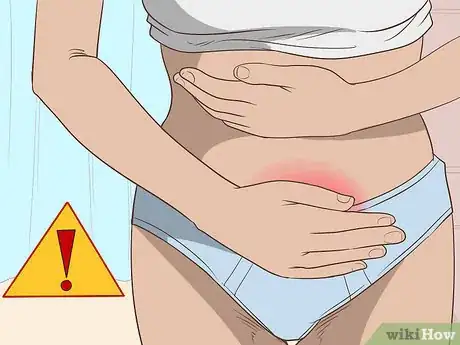
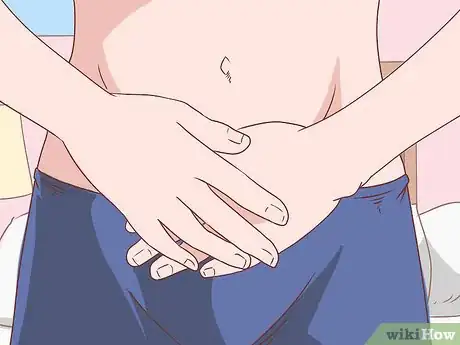
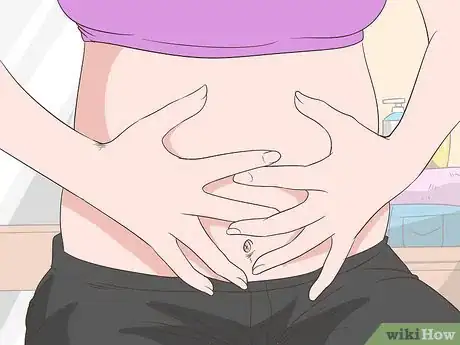
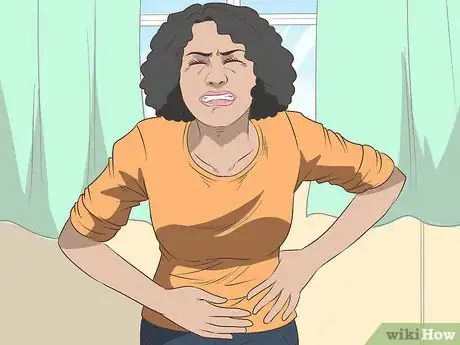
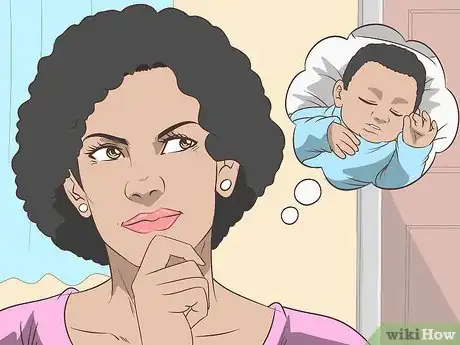



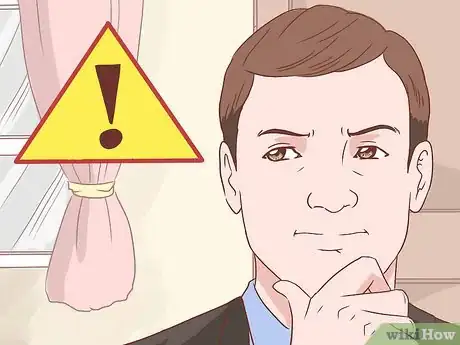
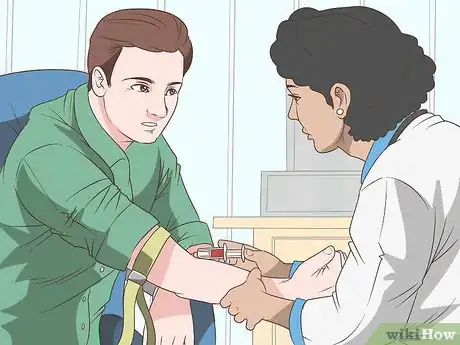
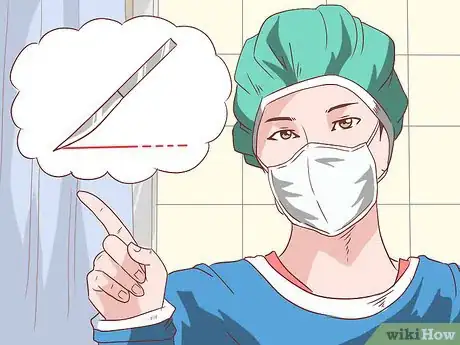



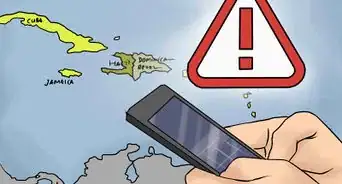



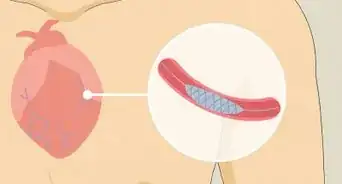

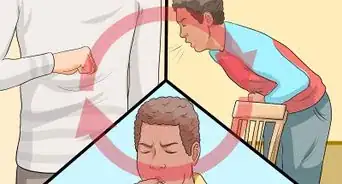
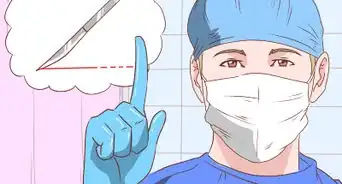













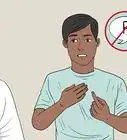

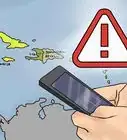




































Medical Disclaimer
The content of this article is not intended to be a substitute for professional medical advice, examination, diagnosis, or treatment. You should always contact your doctor or other qualified healthcare professional before starting, changing, or stopping any kind of health treatment.
Read More...